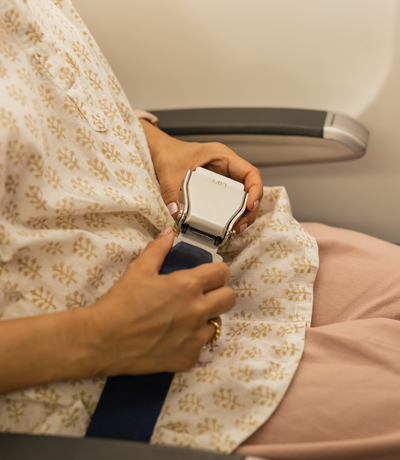Turbulence facts every traveler should know
23 September 2022
When your airplane is shaking and banging, even sharply veering to the side or dipping, and your drink is dangerously close to spilling, it’s no fun. Should you be worried about the turbulence?
If you’ve read reports on the news or social media about injuries due to turbulence you may be concerned. According to the Federal Aviation Administration (FAA), in-flight turbulence is one of the most common causes of non-fatal injuries to flight attendants and unrestrained passengers.
Here are some key turbulence facts:
- On a transatlantic flight you can expect approximately 10-20 minutes of turbulence.
- About 65,000 flights suffer moderate turbulence every year in the US; 5,500 report severe turbulence.
- Turbulence injuries cost US airlines about $500 million each year.
Paul Williams, a professor of atmospheric science at the University of Reading in the UK believes that climate change is impacting turbulence and making it more common. In a study that’s been running since 2013, episodes of ‘clean air turbulence’ (which occurs without visual clues and happens suddenly) have increased.
So, as a traveler concerned about safety, what do you need to know right now about turbulence? Read on and find out.

Turbulence is not inherently dangerous
In our research, this fact came through loud and clear – turbulence isn’t inherently dangerous. It will not cause the plane to crash or fall from the sky.
Pilots prefer to fly above, below, or around air turbulence because it’s uncomfortable for everyone on the plane.
What causes turbulence?
The cause of turbulence depends on several factors including temperatures and wind direction. When the sun rises, it heats the ground and the heated air rises, mixing with cooler air. This causes an imbalance resulting in rough air, or turbulence.
Hint: if you’ve ever flown into a desert airport like Las Vegas or Phoenix during the daytime, you probably had a bumpy approach due to the hot air pushing the plane upward.
Anything from a mountain to tall buildings that interferes with airflow can impact how the ride feels to people onboard. Crossing a tall mountain range, for example, depending on the aircraft’s altitude can feel bumpy.
Turbulence has four levels
The FAA defines four levels of turbulence:
- light (felt as rhythmic bumpiness)
- moderate (felt as erratic bumpiness) – this is when the seat belt light gets turned on
- severe (felt as short bursts of weightlessness and strain on the seatbelt)
- extreme (felt as violent jolts) – this is where objects and people in the cabin can get tossed around
The typical flight will have some light and moderate turbulence, but severe and extreme turbulence is rare.
Where can you sit to minimize the effects?
The smoothest place to sit if you want to reduce the effects of turbulence is right over the wings. Those seats are closest to the plane’s center of lift and gravity and passengers in these seats will feel the effects less.
The impact of turbulence is also less in the front of the plane.
The roughest place for turbulence is farthest to the back of the plane. It’s in the rear seats, closest to the tail, that the knocking and swaying will feel most pronounced.
Tip: larger planes don’t necessarily manage turbulence better. Early models of the Boeing 757, one of the largest planes used on short flights, has a history of being susceptible to turbulence.
The best defenses against turbulence
- Before a flight, you can check the turbulence forecast so you know what you can expect.
- To avoid getting injured, stay in your seat with your seatbelt fastened as much as possible.
- If the ride is rough, deep breathing exercises can help keep your body at ease and reduce anxiety.
Remember that nearly all reports of injuries due to turbulence are by passengers not wearing their seat belts at the time.
Related topics
Damian Tysdal is the founder of CoverTrip, and is a licensed agent for travel insurance (MA 1883287). He believes travel insurance should be easier to understand, and started the first travel insurance blog in 2006.
